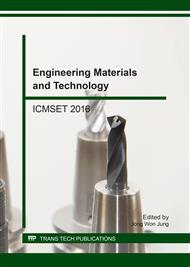p.354
p.360
p.367
p.373
p.379
p.385
p.393
p.401
p.407
Ex Situ UCG Model Experiments with Oxygen Enriched Air in an Artificial Coal Seam
Abstract:
Underground Coal Gasification (UCG) demands precise evaluation of the combustion area in the coal seam. Especially, the monitoring of fracture activity in the coal seam and around rock is important not only for efficient gas production but also for estimation of subsidence and gas leakage to the surface. For this objective, laboratory experiments were conducted using the simulated UCG models. This paper also investigated gas energy for coal consumption, the production gas quantity and heat value, the application of oxygen element balance in the gasification reaction process, and the gas composition obtained in this study. During burning of the coal, temperatures inside the coal, contents of product gases and acoustic emission (AE) activities were monitored successively under the control of feeding gas (air/oxygen and steam) flow rate. Comparison of the temperature variation and accumulated AE event curves revealed a close correlation between them. The local change of temperature inside the coal induced fractures with AE. The AE activity was related closely to the local changes of temperature inside the model. The evaluation of gas energy recovery calculated from the obtained product gas provided a fair evaluation for the coal consumed, and the quantity of gas product and calorific value obtained from the UCG process.
Info:
Periodical:
Pages:
379-384
Citation:
Online since:
June 2017
Authors:
Price:
Сopyright:
© 2017 Trans Tech Publications Ltd. All Rights Reserved
Share:
Citation:


